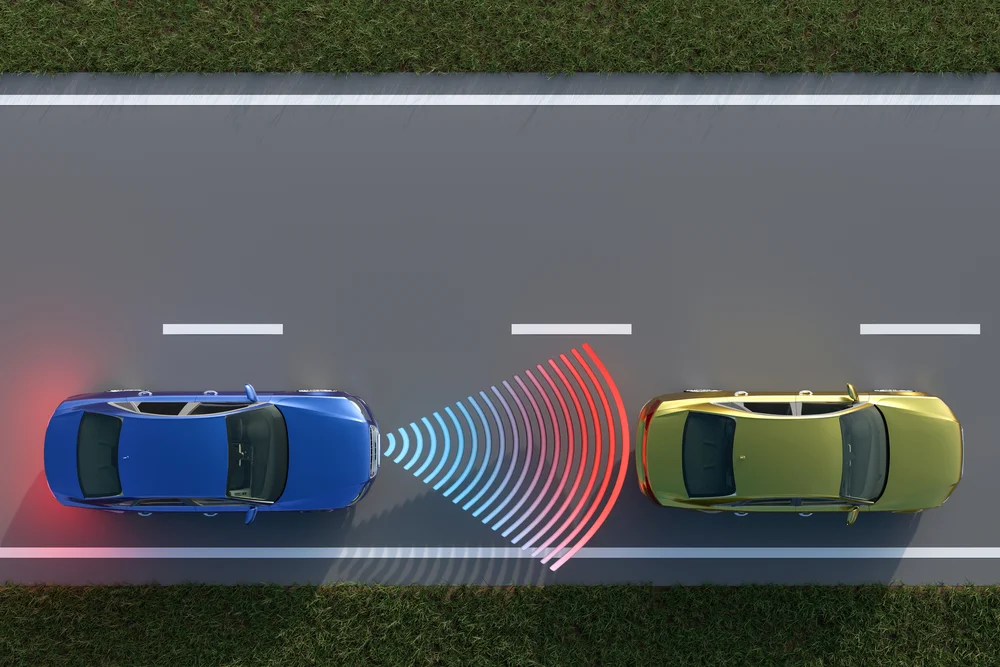Driver Assistance Systems (DAS) are revolutionizing the way we drive, enhancing safety, comfort, and efficiency on the roads. As technology evolves, new features are continually being developed to assist drivers and make driving a more seamless experience. By 2025, we can expect to see even more advanced and integrated systems, setting the stage for greater levels of automation and safety.
In this article, we’ll take a closer look at the top 5 driver assistance systems you can expect to see in 2025, highlighting what’s new, what’s evolving, and how these systems are changing the way we interact with our vehicles.
1. Adaptive Cruise Control (ACC) with Enhanced Features
Adaptive Cruise Control (ACC) has been around for a few years, but by 2025, it’s expected to have undergone significant advancements. Traditionally, ACC maintains a set speed while adjusting to traffic by slowing down and speeding up as necessary, keeping a safe distance from the vehicle ahead. However, in 2025, we’ll see a more sophisticated version of ACC, capable of handling more complex driving scenarios, such as:
- Stop-and-Go Traffic: Newer ACC systems will be able to fully stop and restart your car in heavy traffic, eliminating the need to manually accelerate and brake during slow-moving periods.
- Traffic Jam Assist: Integrated with lane-centering technology, ACC will allow for fully autonomous driving in traffic jams, reducing driver fatigue.
- Improved Radar and Camera Integration: With enhanced sensors, ACC will be able to detect a wider range of objects, providing more accurate adjustments in challenging conditions like rain, fog, or low-light environments.
As ACC systems become more intuitive and reliable, drivers will experience smoother, safer long-distance commutes and city driving.
2. Lane Keep Assist (LKA) and Lane Centring Assistance
Lane Keep Assist (LKA) is another system that is expected to make major strides in 2025. While LKA currently helps to keep the car within the lane by making small steering corrections, future versions will be much more precise and will integrate better with other systems. By 2025, we can expect:
- Improved Steering Control: LKA systems will make more fluid adjustments to ensure the vehicle stays perfectly centered in its lane, even on curving roads. The technology will be able to detect subtle lane markings and guide the car more naturally.
- Expanded Lane Departure Warning (LDW): Lane departure warnings will be even more responsive, with a combination of visual, audible, and haptic feedback (steering wheel vibrations) to alert drivers when they unintentionally drift out of their lane.
- Intervention in Emergency Situations: In cases of emergency, LKA may be integrated with automatic emergency braking, allowing it to take control and steer the car away from potential hazards, preventing accidents in critical situations.
These upgrades will make LKA systems significantly more reliable and efficient, offering drivers a more intuitive experience, particularly on highways and in urban driving conditions.
3. Automated Parking Assistance
In 2025, parking assistance systems will evolve from simple parking sensors to fully automated systems capable of parking a vehicle without driver intervention. These systems will rely on a combination of cameras, sensors, and AI to handle parallel, perpendicular, and even diagonal parking with precision. Here’s what we can expect:
- 360-Degree Parking Coverage: With better integration of cameras and sensors, parking assistance will provide a complete 360-degree view of the surroundings, making it easier to park in tight spaces or navigate complicated parking lots.
- Self-Parking: Building on the existing semi-autonomous parking features, future systems will allow your car to park itself while you remain outside the vehicle. Whether you’re at a crowded shopping mall or an office building, your car will be able to find and park in an available space autonomously.
- Parallel and Perpendicular Parking: The system will be able to handle both parallel and perpendicular parking maneuvers with greater accuracy, even in crowded areas, while eliminating the stress of aligning your car perfectly in a parking spot.
By 2025, expect automated parking to become a standard feature in many premium and even mid-range vehicles, making urban driving much less stressful.
4. Blind Spot Detection and Rear Cross-Traffic Alert
Blind spot detection and rear cross-traffic alert systems have been a crucial part of driver assistance systems, and they will become even more refined by 2025. Here’s what to expect:
- Expanded Detection Range: Current blind spot detection systems have limitations when it comes to distance and the angle of detection. By 2025, these systems will have a significantly broader detection range, capable of spotting approaching vehicles or pedestrians from a much greater distance and at sharper angles.
- Integrated Warning Systems: These systems will integrate with other features like Lane Keep Assist and Automatic Emergency Braking (AEB) to provide both visual and audible alerts if the system detects a potential collision.
- Rear Cross-Traffic Alert Improvements: When reversing out of a parking space, the rear cross-traffic alert system will be more responsive, with the ability to detect vehicles, cyclists, or pedestrians from further away. It may even take control of the brakes in case of imminent danger.
As blind spot detection and rear cross-traffic alert become more advanced, drivers will have greater peace of mind when navigating tight spaces and overtaking other vehicles on the highway.
5. Automatic Emergency Braking (AEB) and Pedestrian Detection
Automatic Emergency Braking (AEB) systems have been increasingly integrated into new vehicles over the past few years, and by 2025, these systems will continue to evolve, offering more refined capabilities to prevent accidents and save lives. The key advancements include:
- Improved Pedestrian Detection: AEB systems will be better at detecting pedestrians, cyclists, and animals in both daylight and nighttime conditions. The sensors and cameras will be enhanced to detect movement even in low visibility scenarios, providing earlier warnings and quicker interventions.
- Collision Prediction and Avoidance: AEB will not only detect a potential collision but will also calculate the best course of action to avoid or mitigate the impact. The system may even steer the vehicle to a safer position while applying the brakes.
- Integration with Traffic Sign Recognition: In the event that an AEB system detects an approaching stop sign or red light, it will automatically slow down the car before the driver even has the chance to react, reducing the likelihood of traffic-related accidents.
With continuous improvement in AI and machine learning, AEB systems will become even more responsive and reliable, reducing road fatalities and collisions.
Conclusion
By 2025, we can expect Driver Assistance Systems to become more seamless, intelligent, and integrated, working together to enhance the overall driving experience. From adaptive cruise control with stop-and-go functionality to fully automated parking and enhanced safety features, these systems will make driving safer, more convenient, and less stressful. As vehicle manufacturers continue to push the boundaries of technology, the road ahead is brighter than ever for driver assistance innovation.
Stay tuned to carprices.ae for more interesting updates on the latest automotive technologies.


